CHEMICAL IDENTIFICATION
-
RTECS NUMBER :
-
WH7100000
-
CHEMICAL NAME :
-
Stannane, dibutyldichloro-
-
CAS REGISTRY NUMBER :
-
683-18-1
-
LAST UPDATED :
-
199806
-
DATA ITEMS CITED :
-
54
-
MOLECULAR FORMULA :
-
C8-H18-Cl2-Sn
-
MOLECULAR WEIGHT :
-
303.85
-
WISWESSER LINE NOTATION :
-
G-SN-G4&4
HEALTH HAZARD DATA
ACUTE TOXICITY DATA
-
TYPE OF TEST :
-
Standard Draize test
-
ROUTE OF EXPOSURE :
-
Administration onto the skin
-
SPECIES OBSERVED :
-
Rodent - rabbit
-
TYPE OF TEST :
-
Standard Draize test
-
ROUTE OF EXPOSURE :
-
Administration into the eye
-
SPECIES OBSERVED :
-
Rodent - rabbit
-
TYPE OF TEST :
-
LD50 - Lethal dose, 50 percent kill
-
ROUTE OF EXPOSURE :
-
Oral
-
SPECIES OBSERVED :
-
Rodent - rat
-
DOSE/DURATION :
-
100 mg/kg
-
TOXIC EFFECTS :
-
Details of toxic effects not reported other than lethal dose value
-
TYPE OF TEST :
-
LC50 - Lethal concentration, 50 percent kill
-
ROUTE OF EXPOSURE :
-
Inhalation
-
SPECIES OBSERVED :
-
Rodent - rat
-
DOSE/DURATION :
-
>364 mg/m3/4H
-
TOXIC EFFECTS :
-
Behavioral - tremor
-
TYPE OF TEST :
-
LDLo - Lowest published lethal dose
-
ROUTE OF EXPOSURE :
-
Intraperitoneal
-
SPECIES OBSERVED :
-
Rodent - rat
-
DOSE/DURATION :
-
7500 ug/kg
-
TOXIC EFFECTS :
-
Vascular - shock
-
TYPE OF TEST :
-
LDLo - Lowest published lethal dose
-
ROUTE OF EXPOSURE :
-
Intravenous
-
SPECIES OBSERVED :
-
Rodent - rat
-
DOSE/DURATION :
-
10 mg/kg
-
TOXIC EFFECTS :
-
Behavioral - somnolence (general depressed activity) Lungs, Thorax, or Respiration - chronic pulmonary edema Liver - liver function tests impaired
-
TYPE OF TEST :
-
LD50 - Lethal dose, 50 percent kill
-
ROUTE OF EXPOSURE :
-
Unreported
-
SPECIES OBSERVED :
-
Rodent - rat
-
DOSE/DURATION :
-
126 mg/kg
-
TOXIC EFFECTS :
-
Details of toxic effects not reported other than lethal dose value
-
TYPE OF TEST :
-
LD50 - Lethal dose, 50 percent kill
-
ROUTE OF EXPOSURE :
-
Oral
-
SPECIES OBSERVED :
-
Rodent - mouse
-
DOSE/DURATION :
-
70 mg/kg
-
TOXIC EFFECTS :
-
Details of toxic effects not reported other than lethal dose value
-
TYPE OF TEST :
-
LD50 - Lethal dose, 50 percent kill
-
ROUTE OF EXPOSURE :
-
Intravenous
-
SPECIES OBSERVED :
-
Rodent - mouse
-
DOSE/DURATION :
-
180 mg/kg
-
TOXIC EFFECTS :
-
Details of toxic effects not reported other than lethal dose value
-
TYPE OF TEST :
-
LD50 - Lethal dose, 50 percent kill
-
ROUTE OF EXPOSURE :
-
Oral
-
SPECIES OBSERVED :
-
Rodent - rabbit
-
DOSE/DURATION :
-
50 ug/kg
-
TOXIC EFFECTS :
-
Details of toxic effects not reported other than lethal dose value
-
TYPE OF TEST :
-
LDLo - Lowest published lethal dose
-
ROUTE OF EXPOSURE :
-
Administration onto the skin
-
SPECIES OBSERVED :
-
Rodent - rabbit
-
DOSE/DURATION :
-
1360 mg/kg
-
TOXIC EFFECTS :
-
Details of toxic effects not reported other than lethal dose value
-
TYPE OF TEST :
-
LDLo - Lowest published lethal dose
-
ROUTE OF EXPOSURE :
-
Intravenous
-
SPECIES OBSERVED :
-
Rodent - rabbit
-
DOSE/DURATION :
-
5 mg/kg
-
TOXIC EFFECTS :
-
Lungs, Thorax, or Respiration - chronic pulmonary edema
-
TYPE OF TEST :
-
LDLo - Lowest published lethal dose
-
ROUTE OF EXPOSURE :
-
Intravenous
-
SPECIES OBSERVED :
-
Rodent - guinea pig
-
DOSE/DURATION :
-
5 mg/kg
-
TOXIC EFFECTS :
-
Lungs, Thorax, or Respiration - chronic pulmonary edema
-
TYPE OF TEST :
-
TDLo - Lowest published toxic dose
-
ROUTE OF EXPOSURE :
-
Oral
-
SPECIES OBSERVED :
-
Rodent - rat
-
DOSE/DURATION :
-
162 mg/kg/8W-C
-
TOXIC EFFECTS :
-
Liver - other changes Nutritional and Gross Metabolic - weight loss or decreased weight gain
-
TYPE OF TEST :
-
TDLo - Lowest published toxic dose
-
ROUTE OF EXPOSURE :
-
Oral
-
SPECIES OBSERVED :
-
Rodent - rat
-
DOSE/DURATION :
-
378 mg/kg/6W-C
-
TOXIC EFFECTS :
-
Immunological Including Allergic - decrease in cellular immune response Nutritional and Gross Metabolic - weight loss or decreased weight gain
-
TYPE OF TEST :
-
TDLo - Lowest published toxic dose
-
ROUTE OF EXPOSURE :
-
Oral
-
SPECIES OBSERVED :
-
Bird - chicken
-
DOSE/DURATION :
-
20 mg/kg/10D-I
-
TOXIC EFFECTS :
-
Endocrine - other changes Endocrine - changes in thymus weight Biochemical - Metabolism (Intermediary) - other proteins
-
TYPE OF TEST :
-
TDLo - Lowest published toxic dose
-
ROUTE OF EXPOSURE :
-
Oral
-
SPECIES OBSERVED :
-
Rodent - rat
-
DOSE/DURATION :
-
70 mg/kg/4W-C
-
TOXIC EFFECTS :
-
Immunological Including Allergic - decrease in humoral immune response
-
TYPE OF TEST :
-
TDLo - Lowest published toxic dose
-
ROUTE OF EXPOSURE :
-
Administration onto the skin
-
SPECIES OBSERVED :
-
Rodent - rat
-
DOSE/DURATION :
-
400 mg/kg/5D-I
-
TOXIC EFFECTS :
-
Liver - other changes Related to Chronic Data - death
-
TYPE OF TEST :
-
TDLo - Lowest published toxic dose
-
ROUTE OF EXPOSURE :
-
Oral
-
DOSE :
-
45 mg/kg
-
SEX/DURATION :
-
female 7-15 day(s) after conception
-
TOXIC EFFECTS :
-
Reproductive - Effects on Embryo or Fetus - fetotoxicity (except death, e.g., stunted fetus) Reproductive - Specific Developmental Abnormalities - craniofacial (including nose and tongue) Reproductive - Specific Developmental Abnormalities - musculoskeletal system
-
TYPE OF TEST :
-
TDLo - Lowest published toxic dose
-
ROUTE OF EXPOSURE :
-
Oral
-
DOSE :
-
20 mg/kg
-
SEX/DURATION :
-
female 8 day(s) after conception
-
TOXIC EFFECTS :
-
Reproductive - Fertility - post-implantation mortality (e.g. dead and/or resorbed implants per total number of implants) Reproductive - Effects on Embryo or Fetus - fetotoxicity (except death, e.g., stunted fetus) Reproductive - Specific Developmental Abnormalities - musculoskeletal system
-
TYPE OF TEST :
-
TDLo - Lowest published toxic dose
-
ROUTE OF EXPOSURE :
-
Oral
-
DOSE :
-
150 mg/kg
-
SEX/DURATION :
-
female 13-15 day(s) after conception
-
TOXIC EFFECTS :
-
Reproductive - Maternal Effects - other effects Reproductive - Effects on Embryo or Fetus - fetotoxicity (except death, e.g., stunted fetus)
-
TYPE OF TEST :
-
TDLo - Lowest published toxic dose
-
ROUTE OF EXPOSURE :
-
Oral
-
DOSE :
-
20 mg/kg
-
SEX/DURATION :
-
female 7-8 day(s) after conception
-
TOXIC EFFECTS :
-
Reproductive - Fertility - post-implantation mortality (e.g. dead and/or resorbed implants per total number of implants) Reproductive - Fertility - litter size (e.g. # fetuses per litter; measured before birth) Reproductive - Effects on Embryo or Fetus - fetotoxicity (except death, e.g., stunted fetus)
MUTATION DATA
-
TYPE OF TEST :
-
DNA inhibition
-
TEST SYSTEM :
-
Rodent - rabbit Cells - not otherwise specified
-
REFERENCE :
-
JTEHD6 Journal of Toxicology and Environmental Health. (Hemisphere Pub., 1025 Vermont Ave., NW, Washington, DC 20005) V.1- 1975/76- Volume(issue)/page/year: 16,229,1985 *** REVIEWS *** ACGIH TLV-TWA 0.1 mg(Sn)/m3;STEL 0.2 mg/m3 (skin) DTLVS* The Threshold Limit Values (TLVs) and Biological Exposure Indices (BEIs) booklet issues by American Conference of Governmental Industrial Hygienists (ACGIH), Cincinnati, OH, 1996 Volume(issue)/page/year: TLV/BEI,1997 ACGIH TLV-Not classifiable as a human carcinogen DTLVS* The Threshold Limit Values (TLVs) and Biological Exposure Indices (BEIs) booklet issues by American Conference of Governmental Industrial Hygienists (ACGIH), Cincinnati, OH, 1996 Volume(issue)/page/year: TLV/BEI,1997 TOXICOLOGY REVIEW EVHPAZ EHP, Environmental Health Perspectives. (U.S. Government Printing Office, Supt of Documents, Washington, DC 20402) No.1- 1972- Volume(issue)/page/year: 4,61,1973 *** U.S. STANDARDS AND REGULATIONS *** MSHA STANDARD-air:TWA 0.1 mg(Sn)/m3 DTLVS* The Threshold Limit Values (TLVs) and Biological Exposure Indices (BEIs) booklet issues by American Conference of Governmental Industrial Hygienists (ACGIH), Cincinnati, OH, 1996 Volume(issue)/page/year: 3,258,1971 OSHA PEL (Gen Indu):8H TWA 0.1 mg(Sn)/m3 CFRGBR Code of Federal Regulations. (U.S. Government Printing Office, Supt. of Documents, Washington, DC 20402) Volume(issue)/page/year: 29,1910.1000,1994 OSHA PEL (Construc):8H TWA 0.1 mg(Sn)/m3 CFRGBR Code of Federal Regulations. (U.S. Government Printing Office, Supt. of Documents, Washington, DC 20402) Volume(issue)/page/year: 29,1926.55,1994 OSHA PEL (Shipyard):8H TWA 0.1 mg(Sn)/m3 CFRGBR Code of Federal Regulations. (U.S. Government Printing Office, Supt. of Documents, Washington, DC 20402) Volume(issue)/page/year: 29,1915.1000,1993 OSHA PEL (Fed Cont):8H TWA 0.1 mg(Sn)/m3 CFRGBR Code of Federal Regulations. (U.S. Government Printing Office, Supt. of Documents, Washington, DC 20402) Volume(issue)/page/year: 41,50-204.50,1994 *** OCCUPATIONAL EXPOSURE LIMITS *** OEL-AUSTRALIA:TWA 0.1 mg(Sn)/m3;Skin JAN 1993 OEL-BELGIUM:TWA 0.1 mg(Sn)/m3;Skin JAN 1993 OEL-DENMARK:TWA 0.1 mg(Sn)/m3;Skin JAN 1993 OEL-FINLAND:TWA 0.1 mg(Sn)/m3;STEL 0.3 mg(Sn)/m3;Skin JAN 1993 OEL-FRANCE:TWA 0.1 mg(Sn)/m3;STEL 0.2 mg(Sn)/m3 JAN 1993 OEL-GERMANY:TWA 0.1 mg(Sn)/m3;Skin JAN 1993 OEL-HUNGARY:STEL 0.1 mg(Sn)/m3;Skin JAN 1993 OEL-THE NETHERLANDS:TWA 0.1 mg(Sn)/m3;Skin JAN 1993 OEL-THE PHILIPPINES:TWA 0.1 mg(Sn)/m3 JAN 1993 OEL-SWEDEN:TWA 0.1 mg(Sn)/m3;STEL 0.2 mg(Sn)/m3;Skin JAN 1993 OEL-SWITZERLAND:TWA 0.1 mg(Sn)/m3;STEL 0.2 mg(Sn)/m3;Skin JAN 1993 OEL-THAILAND:TWA 0.1 mg(Sn)/m3 JAN 1993 OEL-UNITED KINGDOM:TWA 0.1 mg(Sn)/m3;STEL 0.2 mg(Sn)/m3;Skin JAN 1993 OEL IN BULGARIA, COLOMBIA, JORDAN, KOREA check ACGIH TLV OEL IN NEW ZEALAND, SINGAPORE, VIETNAM check ACGIH TLV *** NIOSH STANDARDS DEVELOPMENT AND SURVEILLANCE DATA *** NIOSH RECOMMENDED EXPOSURE LEVEL (REL) : NIOSH REL TO ORGANOTIN COMPOUND-air:10H TWA 0.1 mg(Sn)/m3 REFERENCE : NIOSH* National Institute for Occupational Safety and Health, U.S. Dept. of Health, Education, and Welfare, Reports and Memoranda. Volume(issue)/page/year: DHHS #92-100,1992
|
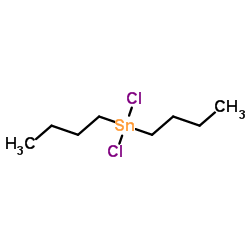








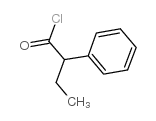 CAS#:36854-57-6
CAS#:36854-57-6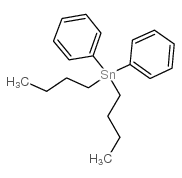 CAS#:6452-61-5
CAS#:6452-61-5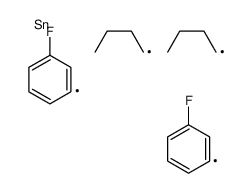 CAS#:62967-77-5
CAS#:62967-77-5 CAS#:141-75-3
CAS#:141-75-3 CAS#:1118-46-3
CAS#:1118-46-3 CAS#:7440-31-5
CAS#:7440-31-5 CAS#:109-69-3
CAS#:109-69-3 CAS#:542-69-8
CAS#:542-69-8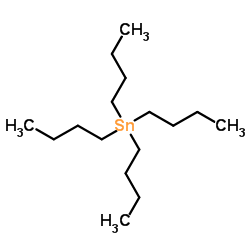 CAS#:1461-25-2
CAS#:1461-25-2 CAS#:1067-41-0
CAS#:1067-41-0 CAS#:1067-55-6
CAS#:1067-55-6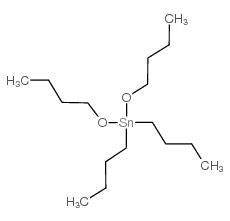 CAS#:3349-36-8
CAS#:3349-36-8 CAS#:563-25-7
CAS#:563-25-7 CAS#:19814-42-7
CAS#:19814-42-7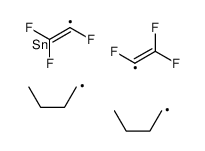 CAS#:2127-90-4
CAS#:2127-90-4 CAS#:994-31-0
CAS#:994-31-0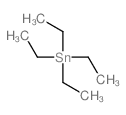 CAS#:597-64-8
CAS#:597-64-8
